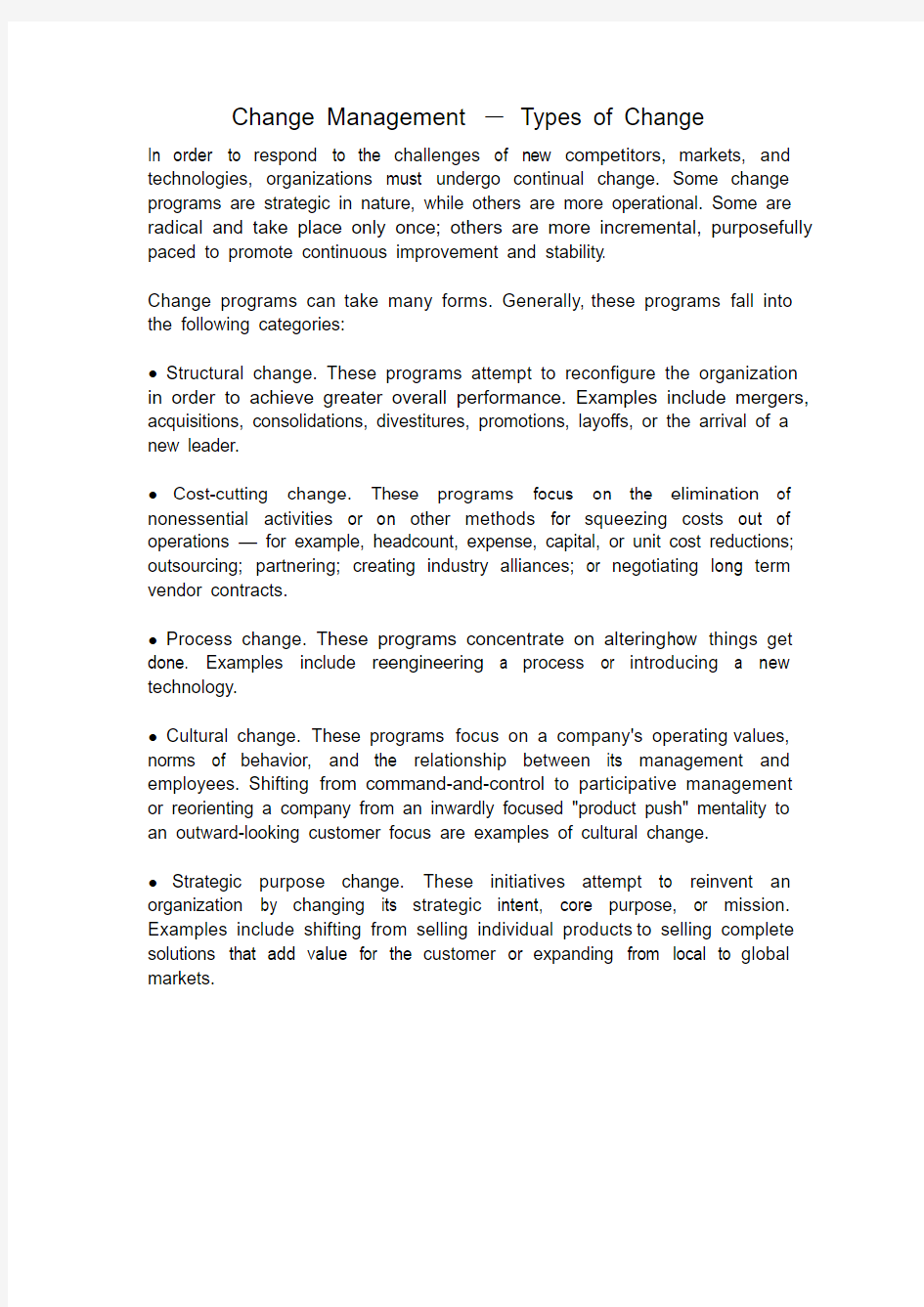2. Change Management -Types of Change

Change Management -Types of Change
In order to respond to the challenges of new competitors, markets, and technologies, organizations must undergo continual change. Some change programs are strategic in nature, while others are more operational. Some are radical and take place only once; others are more incremental, purposefully paced to promote continuous improvement and stability.
Change programs can take many forms. Generally, these programs fall into the following categories:
●Structural change. These programs attempt to reconfigure the organization in order to achieve greater overall performance. Examples include mergers, acquisitions, consolidations, divestitures, promotions, layoffs, or the arrival of a new leader.
●Cost-cutting change. These programs focus on the elimination of nonessential activities or on other methods for squeezing costs out of operations — for example, headcount, expense, capital, or unit cost reductions; outsourcing; partnering; creating industry alliances; or negotiating long term vendor contracts.
●Process change. These programs concentrate on altering how things get done. Examples include reengineering a process or introducing a new technology.
●Cultural change. These programs focus on a company's operating values, norms of behavior, and the relationship between its management and employees. Shifting from command-and-control to participative management or reorienting a company from an inwardly focused "product push" mentality to an outward-looking customer focus are examples of cultural change.
●Strategic purpose change. These initiatives attempt to reinvent an organization by changing its strategic intent, core purpose, or mission. Examples include shifting from selling individual products to selling complete solutions that add value for the customer or expanding from local to global markets.
